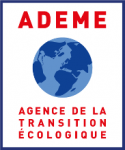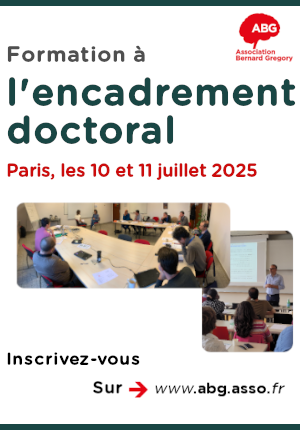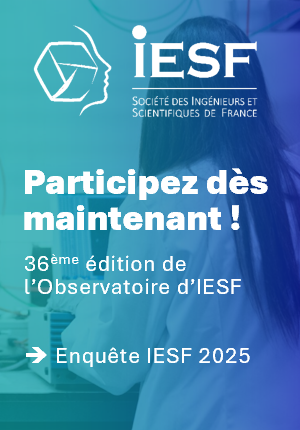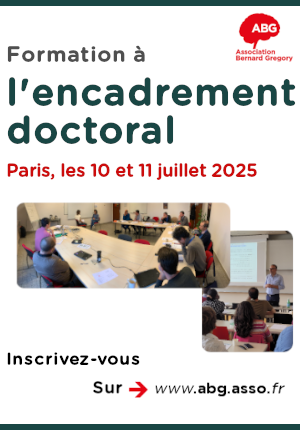Modeling the impact of biogenic volatile organic compound emissions on air quality in a climate change context
| ABG-130940 | Thesis topic | |
| 2025-04-11 | Public/private mixed funding |
- Ecology, environment
- Digital
Topic description
Air quality is one of the most important environmental concerns of the 21st century. Significant efforts are being made at the European level, as part of environmental policies, to reduce anthropogenic emissions that lead to the formation of fine particulate matter. For these policies to be truly effective, it is essential to have accurate estimates of all pollutant emissions and their precursors, as well as an understanding of how they are transformed in the atmosphere. One of the greatest uncertainties in estimating air pollutant concentrations lies in quantifying the contribution of natural sources, which can act as precursors—while only the anthropogenic fraction can be targeted by management measures.
In particular, emissions of biogenic volatile organic compounds (BVOCs) are very difficult to quantify accurately and are also highly sensitive to variables such as temperature, solar radiation, and soil moisture. Their dependence on meteorological variables suggests that BVOC emissions could increase significantly because of climate change.
Air quality simulation work conducted at INERIS is based on the use and development of the CHIMERE model (Menut et al., 2024). This is a 3D regional model that calculates the transport and transformation of pollutants. Initial efforts to improve the representation of biogenic emissions in the CHIMERE air quality model have already been made, notably by implementing the biogenic emission calculations based on the MEGAN model parameterizations (Guenther et al., 2012). However, the dependence on certain parameters—such as soil moisture—is still not well represented in the model.
This PhD thesis is part of this context and aims to better quantify current and future biogenic emissions within the CHIMERE air quality model in order to improve the simulation of atmospheric pollutants at the European scale. To achieve this, we will first identify improvements to be incorporated into the emission scheme based on the scientific literature. These enhancements will then be integrated into the CHIMERE model. The representation of certain variables in CHIMERE (such as soil hydrodynamics and vegetation phenology) may also be improved using results from the global terrestrial biosphere model ORCHIDEE. This model is particularly used for climate-related applications (such as calculating energy, water, carbon, and nitrogen budgets of terrestrial ecosystems), as well as for studying the functioning of land surfaces and, in particular, the impact of global changes on ecosystems (Krinner et al., 2005; Messina et al., 2016; Vuichard et al., 2019).
Various sensitivity tests will be conducted to understand which processes and variables are the most critical, and to prioritize their importance. Finally, an estimate of the future evolution of air quality in Europe by the year 2050 will be produced, taking into account possible changes in BVOC emissions.
THESIS WORK PLAN
The main objective of the PhD is to use the two modeling tools, CHIMERE and ORCHIDEE, to identify the key variables and processes for better estimation of BVOC emissions and atmospheric pollutant concentrations, both for present-day conditions and for future projections. The thesis will be structured around three main tasks:
1. Identification of improvements to be integrated into the emission scheme based on the latest scientific publications, and updating of the BVOC production scheme in CHIMERE.
2. Evaluation of the performance of the modified CHIMERE model in estimating biogenic emissions through medium-resolution simulations over Europe and/or high-resolution simulations over France. This will include comparisons with published studies and available observational data (in-situ and satellite) for both biogenic emissions and atmospheric pollutant concentrations. The impact of emissions on air quality will be analyzed.
3. Upgrading the CHIMERE model to an operational configuration for future projections, taking into account the evolution of BVOC emissions in Europe by 2050.
Funding category
Funding further details
Presentation of host institution and host laboratory
The National Institute for Industrial Environment and Risks (Ineris) is a public industrial and commercial institution under the supervision of the Ministry for Ecological Transition. Specialized in the assessment and prevention of technological and environmental risks, Ineris is a recognized center of expertise and research, committed to safety and environmental protection. With over 500 experts, it operates at both national and international levels on scientific projects with major societal stakes. Ineris is a leading player in France and internationally, particularly through its contributions to numerous projects aimed at improving air pollution modeling and reducing its impact on human health and ecosystems.
This work will be carried out primarily at INERIS, within the MOCA team (Atmospheric Modeling and Environmental Mapping). Regular meetings and visits will be organized at the Laboratory for Climate and Environmental Sciences (LSCE) to facilitate interaction with the team responsible for developing the ORCHIDEE model and to benefit from the laboratory’s dynamic and scientifically stimulating environment.
Throughout the PhD, the selected student will be supported in their scientific work by the supervisory team and will also be assigned a tutor (a designated point of contact) for more informal discussions (overall progress of the PhD, professional growth, support in case of difficulties, etc.).
Website :
Candidate's profile
Academic background:
Master’s degree or engineering school diploma in physics/chemistry, environmental and climate sciences, or agronomy.
Scientific and technical skills:
Knowledge of the climate system, particularly atmospheric physics and chemistry, and dynamics, as well as land-atmosphere interactions.
Good writing and oral communication skills are required.
Programming knowledge and a strong interest in numerical modeling.
Language skills:
Good knowledge of spoken and written English.
Additional skills and qualities:
Ability to work in a team while remaining autonomous and being capable of making suggestions and contributing new ideas.
Vous avez déjà un compte ?
Nouvel utilisateur ?
Get ABG’s monthly newsletters including news, job offers, grants & fellowships and a selection of relevant events…
Discover our members
 ASNR - Autorité de sûreté nucléaire et de radioprotection - Siège
ASNR - Autorité de sûreté nucléaire et de radioprotection - Siège  Institut Sup'biotech de Paris
Institut Sup'biotech de Paris  Laboratoire National de Métrologie et d'Essais - LNE
Laboratoire National de Métrologie et d'Essais - LNE  ANRT
ANRT  Groupe AFNOR - Association française de normalisation
Groupe AFNOR - Association française de normalisation  PhDOOC
PhDOOC  ADEME
ADEME  TotalEnergies
TotalEnergies  ONERA - The French Aerospace Lab
ONERA - The French Aerospace Lab  MabDesign
MabDesign  MabDesign
MabDesign  Ifremer
Ifremer  CASDEN
CASDEN  Aérocentre, Pôle d'excellence régional
Aérocentre, Pôle d'excellence régional  Tecknowmetrix
Tecknowmetrix  Nokia Bell Labs France
Nokia Bell Labs France  SUEZ
SUEZ  CESI
CESI  Généthon
Généthon





